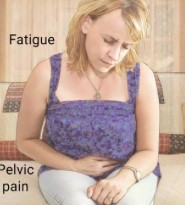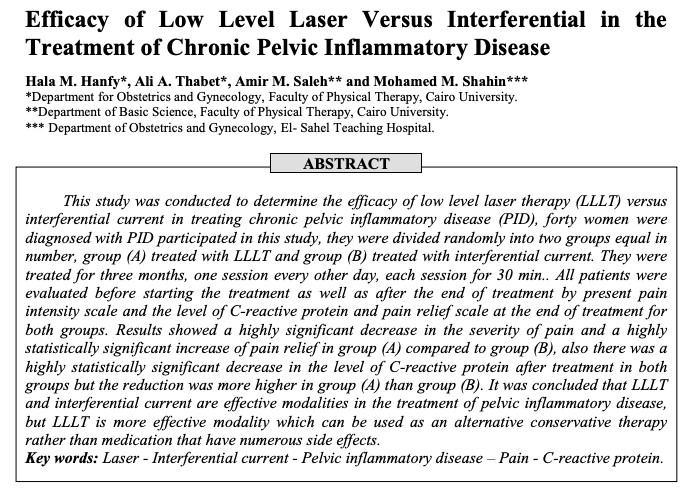What is PID?
This is a chronic infection of the fallopian tubes and uterus. It is usually as a result of an untreated transmitted infection or an untreated bacterial infection. Because inflammation is present in the fallopian tubes and uterus, pain is experienced and sometimes is accompanied by a fever. Low Level Laser Therapy (PBM Therapy) is an anti-inflammatory treatment, and will lessen and eventually eliminate the pain and infection. Pelvic Inflammatory disease may cause scar tissue and collections of infected fluid (abscesses) to develop in the fallopian tubes and damage reproductive organs, if left untreated. Under the heading of PID we could also include issues such as Vulvodynia and Tight Pelvic Floor. These painful conditions are easily resolved by visiting our clinic and undergoing Low Level Laser Therapy or Photobiomodulation Therapy.

How can Low Level Laser Help?
Low Level Laser Therapy or Photobiomodulation Therapy can assist by reducing or completely eliminating inflammation because it increases Adenosine Triphosphate (ATP) production in the cell, which is stored energy. This increase of energy is released into the tissue and accelerates the repair process. Low Level Laser dilates arteries and veins around the infection which helps remove damaged cellular debris and increase nutrients and oxygen. White blood cell activity is enhanced, encouraging a more rapid repair process. Also, some molecules that are responsible for causing inflammation are reduced, and beneficial antioxidants like superoxide dismutase are increased.Inflammation reduction – a brief explanation.
One of the major effects of light when absorbed by our bodies, is on the mitochondria, the power source inside our cells. When cells are stressed through injury or damage, the mitochondria produce nitric oxide (a toxic chemical), which in turn reduces oxygen production, significantly lowering cell energy and leading to a state of oxidative stress. Oxidative stress then creates a state of inflammation and cell death. LLLT or PMB Therapy dissociates the nitric oxide allowing oxygen back into the cell, so the energy level of the cell is restored and oxidative stress is reduced. Once normal mitochondrial function is re-established through LLLT, cell function improves, pain reduces and the patient begins to feel better.
PUBLISHED STUDY
For more information, simply fill in the form below and we'll contact you to organise a no-obligation consultation...
